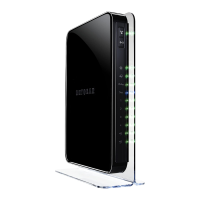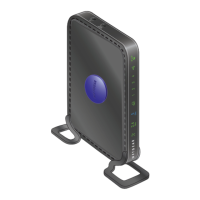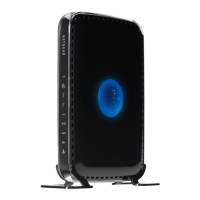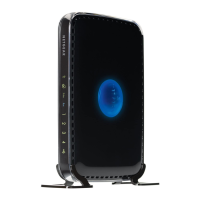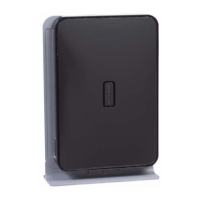Advanced Configuration
85
ProSafe Dual Band Wireless-N Access Point WNDAP360
3. Specify the settings as explained in the following table:
Table 24. Advanced Wireless Settings
Field Description
RTS Threshold (0–2347) Enter the Request to Send (RTS) threshold. The default setting is
2347.
If the packet size is equal to or less than the RTS threshold, the
wireless access
point uses the Carrier Sense Multiple Access with
Collision Detection (CSMA/CD) mechanism, and the data frame is
transmitted immediately after the silence period.
If the packet size is larger than the RTS threshold, the wireless access
po
int uses the CSMA with Collision Avoidance (CSMA/CA)
mechanism. In this situation, the transmitting station sends an RTS
packet to the receiving station, and waits for the receiving station to
return a Clear to Send (CTS) packet before sending the actual packet
data.
Fragmentation Length (256–2346) Enter the maximum packet size that is used for the fragmentation of
da
ta packets. Packets that are larger than the specified fragmentation
length are broken up into smaller packets before being transmitted.
The fragmentation length needs to be an even number. The default
setting is 2346.
Beacon Interval (100–1000) Enter the interval between 100 ms and 1000 ms for each beacon
tra
nsmission, which allows the wireless access point to synchronize
the wireless network. The default setting is 100.
Aggregation Length (1024–65535)
Note: This setting does not apply
to the 80
2.11a mode.
Enter the maximum length of Aggregated MAC Protocol Data Unit
(AMPDU) packets. Larger aggregation lengths could lead to better
network performance. Aggregation is a mechanism used to achieve
higher throughput. The default setting is 65535.
AMPDU
Note: This setting does not apply
to the 80
2.11b/bg modes and the
802.11a mode.
Select the Enable rad
io button to allow the aggregation of several MAC
frames into a single large frame to achieve higher throughput. Enabling
Aggregated MAC Protocol Data Unit (AMPDU) could lead to better
network performance. By default, the Enable radio button is selected.
RIFS Transmission
Note: This setting does not apply
to the 80
2.11b/bg modes and the
802.11a mode.
Select the Enable radio button to allow transmission of successive
frames at different transmit powers. Enabling Reduced Interframe
Space (RIFS) could lead to better network performance. By default, the
Disable radio button is selected.
DTIM Interval (1–255) Enter the Delivery Traffic Indication Message (DTIM) interval, also
referred
to as the data beacon rate, which indicates the beacon
delivery traffic indication message period in multiples of beacon
intervals. This value needs to be between 1 and 255. The default
setting is 3.
